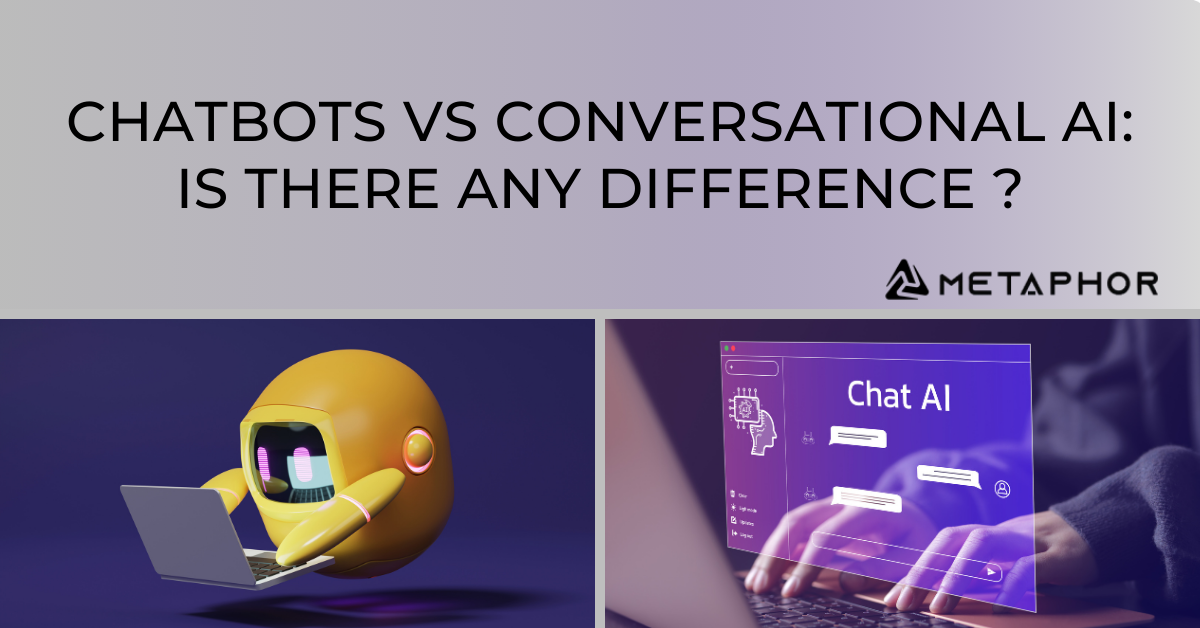In the realm of digital communication, the terms chatbots and conversational AI are frequently used interchangeably, leading to a sense of ambiguity and confusion. As the demand for enhanced customer satisfaction and engagement escalates, businesses are increasingly turning to artificial intelligence (AI) chatbot solutions to improve their online presence. However, it is crucial to grasp the distinct differences between chatbots and conversational AI to maximize their potential benefits.
The Inception of Conversational AI: A Broader Technology Paradigm
Conversational AI refers to a broad technological framework that enables computers to simulate conversations with humans, incorporating chatbots and virtual assistants. This technology utilizes machine learning algorithms, collects data to inform its responses, and employs natural language processing (NLP) to facilitate personalized conversations. Conversational AI encompasses a wide range of technologies, including speech recognition, sentiment analysis, and intent recognition, which work together to create more sophisticated and dynamic interactions.
The Complexity of Operations: A Key Differentiator
The primary distinction between chatbots and conversational AI lies in the complexity of their operations. Chatbots typically operate within predetermined parameters, whereas conversational AI utilizes advanced technologies to create more sophisticated and dynamic interactions. This disparity can be likened to the difference between a specific type of vehicle and automotive engineering. While a chatbot is a specific type of software application, conversational AI encompasses the study and application of various AI technologies.
The Evolution of Conversational AI: A Growing Trend
According to a recent report, approximately one in four companies plans to implement their own AI agent in the near future. Furthermore, a study by Accenture reveals that 77% of businesses believe after-sales and customer service are the most critical areas that will be influenced by virtual artificial intelligence assistants. As conversational AI continues to evolve, it is likely that AI will play an increasingly prominent role in customer service conversations, enabling businesses to provide more efficient and effective support to their clients.
Creating a Conversational Chatbot: Harnessing the Power of AI
While the development of conversational AI may seem daunting, businesses can leverage existing chatbot platforms to create advanced conversational interfaces. By harnessing the capabilities of AI, companies can deliver personalized and engaging experiences for their customers. This, in turn, can lead to improved customer satisfaction, increased loyalty, and enhanced brand reputation. By understanding the core functionalities and potential applications of conversational AI, businesses can harness the power of this technology to enhance their customer service operations and drive growth in an increasingly competitive market.

The Evolution of Customer Interaction: How Conversational AI is Revolutionizing Business Communications
- In recent years, the business world has witnessed a significant transformation in the way companies interact with their customers. The emergence of novel technologies, particularly conversational AI, has revolutionized the landscape of customer service, offering innovative solutions that are redefining the way businesses engage with their clients. This essay aims to provide an in-depth exploration of conversational AI, its core functionalities, and its potential to transform the future of customer service.
- At its core, conversational AI refers to a broad range of technologies that enable computers to understand and respond to human language. This includes systems utilized in chatbots, voice assistants, and conversational apps, all of which are driven by natural language processing (NLP). NLP is a rapidly growing field of artificial intelligence that facilitates computers to comprehend human language, allowing machines to interact with humans in a more natural and intuitive manner.
- The key differentiator of conversational AI lies in its ability to understand the context of a conversation and respond accordingly. Unlike traditional chatbots that simply parrot pre-determined responses, conversational AI systems can engage in more complex conversations, empathizing with customers’ emotions and intents. This is achieved through the advanced NLP functionalities of AI engines, which enable machines to recognize and respond to human emotions, such as excitement, anger, or frustration.
- For instance, conversational AI technology can differentiate between customers who are enthusiastic about a product and those who are dissatisfied, requiring an apology or compensation. This capability alleviates concerns regarding the ability of bots to adequately understand human input, a worry shared by approximately 47% of business executives when implementing bot-based solutions. Furthermore, conversational AI can utilize intent analysis to determine the purpose or goal of customer messages, allowing it to respond more accurately and effectively.
- The sophistication of conversational AI is continually evolving, and it is likely that this technology will eventually take over customer service conversations.
- The integration of AI technology in call centers or customer support departments can be highly beneficial, freeing up business owners to focus on more complex issues while AI handles customer and user interactions. This not only enhances the efficiency of customer service operations but also improves the overall customer experience.
- To gain a deeper understanding of conversational AI, it is essential to examine some real-world examples. Companies for instance, have developed AI-powered chatbots that can engage with customers in a natural and intuitive manner, providing support and resolving issues in a timely and efficient manner.
- Similarly, studies on ChatGPT have shown that AI-powered bots can hold complex conversations, empathizing with customers and responding to their queries in a more human-like manner.
Conclusion
In conclusion, conversational AI is revolutionizing the way companies interact with their customers, offering a more natural and intuitive experience. By understanding the distinct differences between chatbots and conversational AI, businesses can make informed decisions about how to leverage these technologies to achieve their goals. As the demand for enhanced customer satisfaction and engagement continues to escalate, the importance of conversational AI will only continue to grow.




